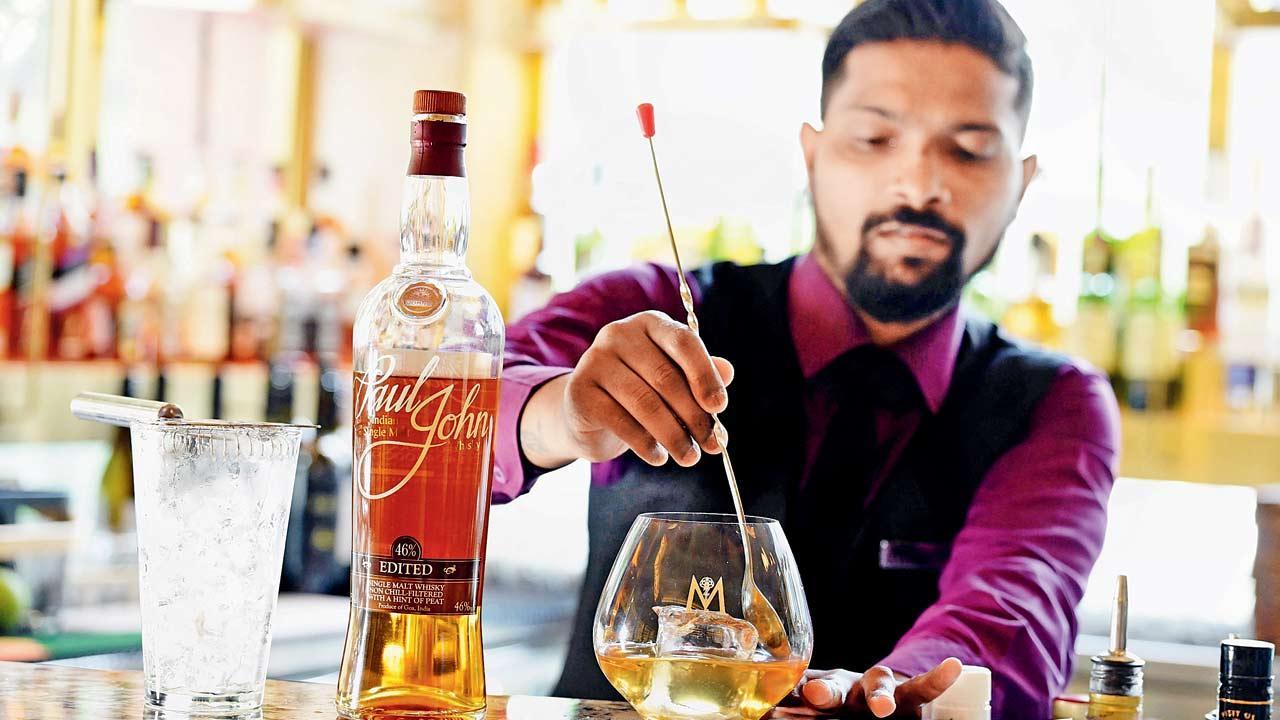Home / Sunday-mid-day / / Article /
Introvert single malt is finally mixing
Updated On: 25 April, 2022 03:53 PM IST | Mumbai | Phorum Pandya
The birth of young whiskies that have been in cask for as little as four years, and bold mixology talent is making sure that single malts are right up there with gin and vodka to make a premium cocktail

Bar tender Tushar Dalvi makes cocktails at Mansionz, Kamala Mills. Pic/Bipin Kokate
At the typical single malt whisky tasting, the whisky master would hold up a stout Glencairn glass to the light and discuss the colour of the contents: amber, golden, or copper. We’d be urged to nose it for its bouquet that opens aromatic notes. After a swirl and small sip, the liquid on the palate would be discussed for the body, tasting notes, and finish. Then, a few drops of water would be allowed in to unfurl the complex liquid. The single malt drinker would be the guy in a suit, with a preference for leather chairs, sometimes holding a cigar. This is was the old, hackenyed world. In the new one, the single malt drinker is nursing the same drink as a cocktail.

Yangdup Lama of Sidecar and Speak Easy in Delhi and Gurugram thinks that the narrative around single malts is changing and cocktails are the future.Pic/Nishad Alam




